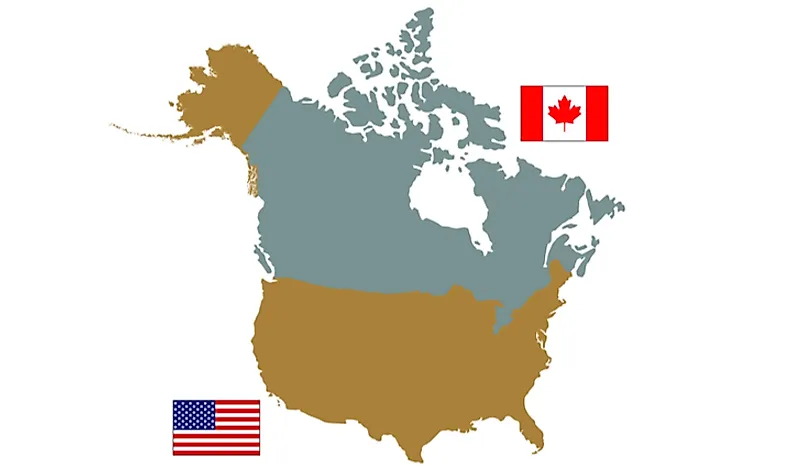Is Canada Bigger Than the United States?

Canada is a North American country that is bordered by the United States and three oceans (the North Pacific, the North Atlantic, and the Arctic Oceans). The 5,525 mile-long American-Canadian border is the longest bi-national land boundary in the world. Canada has only one land border while the United States shares a second boundary with Mexico.
Is Canada bigger than the United States?
Yes, the land area of Canada is bigger than that of the United States. While the US is about two-thirds the size of the African continent, half the size of Russia, and over twice the size of the EU, it is slightly smaller than Canada. Canada occupies a total area of about 3,855,100 sq miles making it the second biggest nation in the world while the United States occupies an area of approximately 3,796,742 sq miles. Canada has a longer coastline than the United States. Canada has the longest shoreline in the world which is over 151,019 miles long. The Exclusive Economic Zone of both the United States and Canada is 200 nautical miles.
Geography of Canada
Canada is made up of three territories and ten provinces that extend from the Pacific to the Atlantic and northwards to the Arctic Ocean. Even though Canada is the second biggest country on earth right after Russia, and larger than the United States, a huge percentage of its territory is dominated by tundra and forest. The United States has a bigger land area (3,531,905 sq miles) than Canada (3,511,023 sq miles). Canada has the world’s fourth-largest land area. Canada has numerous large fresh and saltwater lakes and rivers that occupy 8.92% of its territory. Out of the 13 territories and provinces of Canada, only two are landlocked (Saskatchewan and Alberta). The Canadian Forces Station Alert in Ellesmere Island, Canada is the northernmost settlement in the world. Three of the arctic islands, Ellesmere, Victoria, and Baffin Islands, are ranked among the world’s top ten largest islands.
Climate
The average summer and winter temperature in Canada varies from place to place. Winters are quite harsh in the prairie and interior provinces where the temperature can drop as low as -50°C with severe wind chills. The ground of the non-coastal regions is covered by snow for about 6 months annually. The coasts of British Columbia experiences a temperate climate accompanied by rainy and mild winters. The average temperature of the west and east coast can go as low as 20°C with the summer temperature between the coasts averages at 30°C. The extreme northern parts of the country can experience snow all year due to a polar climate.
Demographics
With a population of over 327 million people, the United States is more populated than Canada (35 million). The population density of Canada is 9.6 individuals/sq mile which is one of the lowest in the world. A vast majority of Canadians live in a discontinuous band of about 186.4 miles from the southern America-Canadian boundary. Over four-fifths of the Canadians reside within 93 miles from the Canadian-American border. The most populated provinces in Canada include Ontario followed by Quebec and British Columbia. The population of Canada increased by 5% from 2011 to 2016 (35,151,728). The Canadian population increased by 1.7 million with the immigrants accounting for over 66% of the growth.











